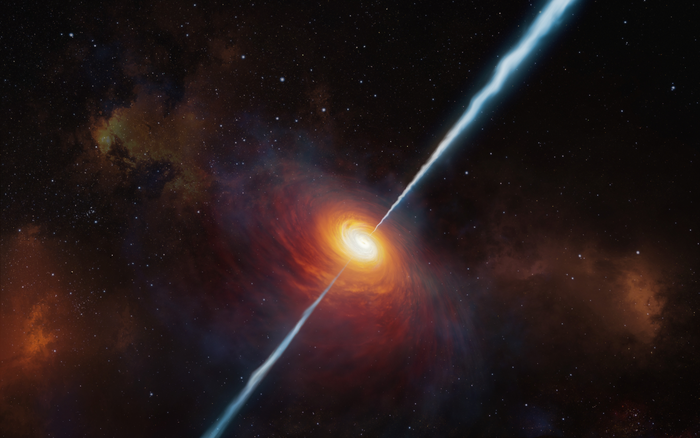
Do galaxy collisions power quasars?
Astronomers at the University of Sheffield in the U.K. said this morning (April 26, 2023) they have new observations in hand, proving that colliding galaxies power quasars.
Quasars are the most powerful objects in the universe. They’re thought to shine as brightly as a trillion stars, yet are packed into a space as small as our solar system. And what could generate so much energy in such a small space? The most popular models feature galaxies in the process of formation, and supermassive black holes at the quasars’ hearts.
The new work suggests colliding galaxies as the cause of quasars’ magnificent power. And it suggests that our home galaxy – the Milky Way – will become a quasar when it collides with the nearby Andromeda galaxy, billions of years from now.
New observations of 48 galaxies
The Sheffield astronomers said they used deep imaging observations from the Isaac Newton Telescope in La Palma, an island in the Canary Islands, Spain. They observed 48 galaxies that host quasars and compared them to 100 galaxies without quasars to learn that galaxy collisions ignite the quasars. They observed:
… the presence of distorted structures in the outer regions of the galaxies that are home to quasars.
And they explained:
When two galaxies collide, gravitational forces push huge amounts of gas toward supermassive black holes at the center of the remnant galaxy system that results from the collision … just before the gas is consumed by the black hole, it releases extraordinary amounts of energy in the form of radiation, resulting in a quasar.
Adding:
The Milky Way is likely to experience its own quasar when it collides with the Andromeda galaxy in roughly five billion years’ time.
Here’s how it works
The astronomers’ statement explained:
Most galaxies have supermassive black holes at their centers. They also contain substantial amounts of gas. But most of the time this gas is orbiting at large distances from the galaxy centers, out of reach of the black holes.
Collisions between galaxies drive the gas toward the black hole at the galaxy center; just before the gas is consumed by the black hole, it releases extraordinary amounts of energy in the form of radiation, resulting in the characteristic quasar brilliance.
The ignition of a quasar can have dramatic consequences for entire galaxies. It can drive the rest of the gas out of the galaxy, which prevents it from forming new stars for billions of years into the future.
This is the first time that a sample of quasars of this size has been imaged with this level of sensitivity …
And that additional sensitivity must be what’s creating confidence in these researchers that they’ve “solved” the mystery of quasars. Their statement said:
By comparing observations of 48 quasars and their host galaxies with images of over 100 non-quasar galaxies, researchers concluded that galaxies hosting quasars are approximately three times as likely to be interacting or colliding with other galaxies.
The study has provided a significant step forward in our understanding of how these powerful objects are triggered and fueled.
The Sheffield astronomers are excited
Astrophysicist Clive Tadhunter of the University of Sheffield said:
Quasars are one of the most extreme phenomena in the universe. And what we see is likely to represent the future of our own Milky Way galaxy when it collides with the Andromeda galaxy in about five billion years.
It’s exciting to observe these events and finally understand why they occur. But thankfully Earth won’t be anywhere near one of these apocalyptic episodes for quite some time.
The researchers also pointed out that quasars are important to astrophysicists because, due to their brightness, they stand out at large distances and therefore act as “beacons” to the earliest epochs in the history of the universe. Jonny Pierce at the University of Hertfordshire explained:
It’s an area that scientists around the world are keen to learn more about. One of the main scientific motivations for NASA’s James Webb Space Telescope was to study the earliest galaxies in the universe. And Webb is capable of detecting light from even the most distant quasars, emitted nearly 13 billion years ago.
Quasars play a key role in our understanding of the history of the universe … and possibly also the future of the Milky Way.

Bottom line: Do galaxy collisions power quasars? U.K. astronomers have evidence suggesting they do. If so, then our own Milky Way galaxy might someday become a quasar.











